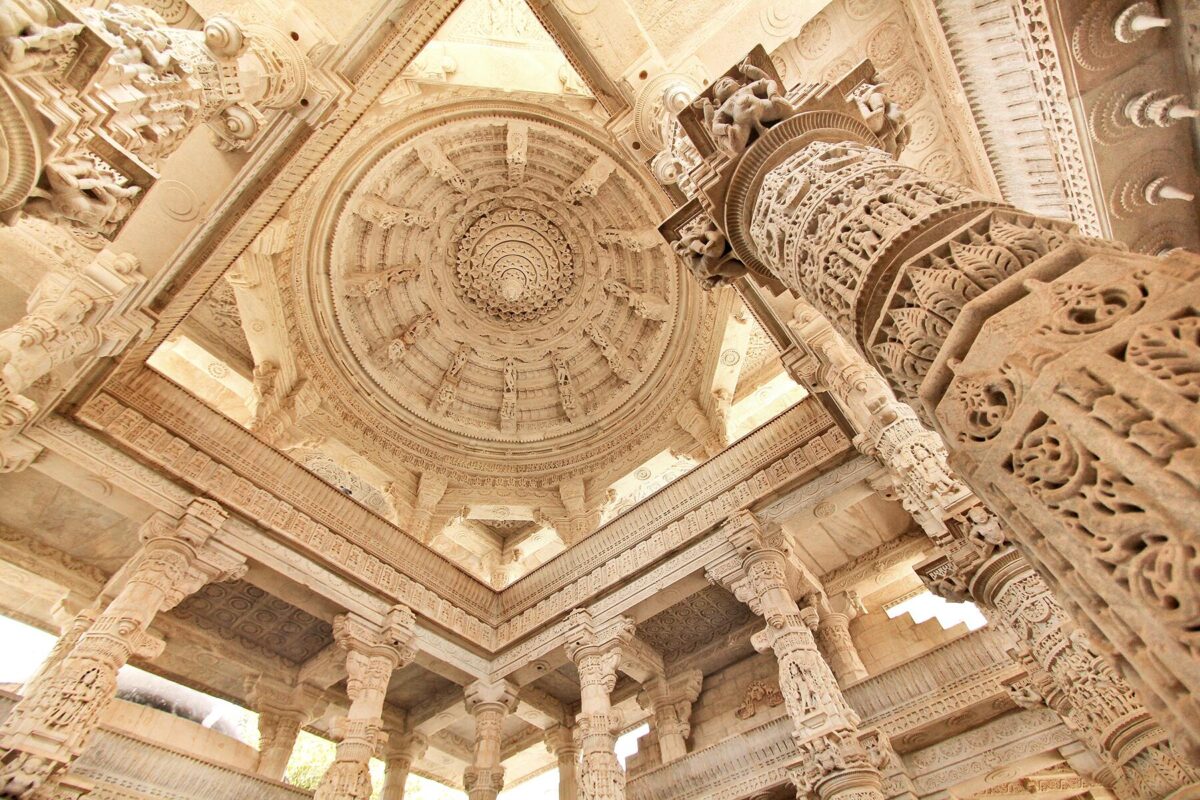
Jainism, one of the oldest religions in the world, has a rich architectural tradition that reflects its profound spiritual principles and intricate cultural heritage. Jain temples, often characterized by their ornate designs, serene atmospheres, and exquisite craftsmanship, stand as testaments to both faith and artistic mastery. Let’s delve into the captivating world of Jain temple architecture and its compelling history.
History of Jain Temple Architecture
Jain temples, known as “Derasars” or “Basadis,” have evolved over centuries, each reflecting the stylistic preferences of the era and the geographical region where they were built. The history of Jain temple architecture dates back to ancient times, with early examples found in regions like Gujarat, Rajasthan, Karnataka, and Madhya Pradesh.
Early Period:
- Pre-6th Century CE: The earliest Jain temples were often carved out of rock faces or constructed using wood and brick. These temples, like the Udayagiri and Khandagiri caves in Odisha, showcased simple yet profound architectural elements.
- 6th-12th Century CE: This period witnessed the rise of structural Jain temples, characterized by intricate stone carvings, elaborate pillars, and iconic sanctums. Examples include the Dilwara Temples in Mount Abu, Rajasthan, renowned for their detailed marble work and intricate ceilings.
Medieval Period:
- 12th-16th Century CE: Jain temple architecture flourished during this period under the patronage of various rulers, leading to the construction of temples such as the Ranakpur Temple in Rajasthan, famous for its 1,444 intricately carved marble pillars.
Modern Period:
- Post-16th Century CE: Jain temple architecture continued to evolve, blending traditional motifs with influences from contemporary architectural styles. Modern Jain temples, often built with white marble and adorned with colorful paintings, exemplify a harmonious blend of ancient traditions and modern aesthetics.
Key Elements of Jain Temple Architecture
Jain temples are characterized by several distinctive architectural features that symbolize Jain principles and aesthetics:
- Garbhagriha (Sanctum): The sanctum of a Jain temple houses the main deity or idols of Tirthankaras (spiritual teachers). It is often designed to facilitate meditation and spiritual contemplation.
- Manastambha (Column of Honor): A prominent feature in many Jain temples, the Manastambha is a pillar adorned with intricate carvings and often topped with a sculpture of a Jain Tirthankara.
- Mandapa (Hall): The mandapa serves as a congregation hall for devotees and is adorned with ornate pillars, intricate ceiling designs, and vibrant murals depicting Jain mythology.
- Gopuram (Entrance Gate): In South Indian Jain temples, gopurams are elaborately carved entrance gateways that often feature depictions of celestial beings, gods, and goddesses.
- Torana (Archway): Decorative archways, often intricately carved, mark the entrance to the sanctum or mandapa, symbolizing auspiciousness and spiritual transition.
Symbolism and Spiritual Significance
Jain temple architecture is steeped in symbolism, with every element serving a spiritual purpose:
- Ahimsa (Non-violence): Jain temples emphasize non-violence, with architecture designed to minimize harm to living beings. For example, wooden and stone carvings often depict flora and fauna rather than human or animal figures.
- Cosmic Representation: Jain cosmology is often represented through temple architecture, with mandalas and geometric patterns symbolizing the universe and its celestial beings.
- Spiritual Journey: The layout of Jain temples often mirrors the spiritual journey of a devotee, progressing from the outer courtyard (symbolizing the material world) to the inner sanctum (symbolizing spiritual enlightenment).
Conclusion
Jain temple architecture is not merely about aesthetic beauty but also serves as a profound expression of Jain values and spiritual aspirations. From the ancient rock-cut caves to the majestic marble temples of today, Jain architecture continues to inspire awe and reverence, inviting devotees and admirers alike to appreciate its timeless beauty and spiritual significance.
In essence, Jain temple architecture stands as a testament to the enduring legacy of Jainism, blending intricate artistry with profound spirituality in structures that transcend time and geographical boundaries.